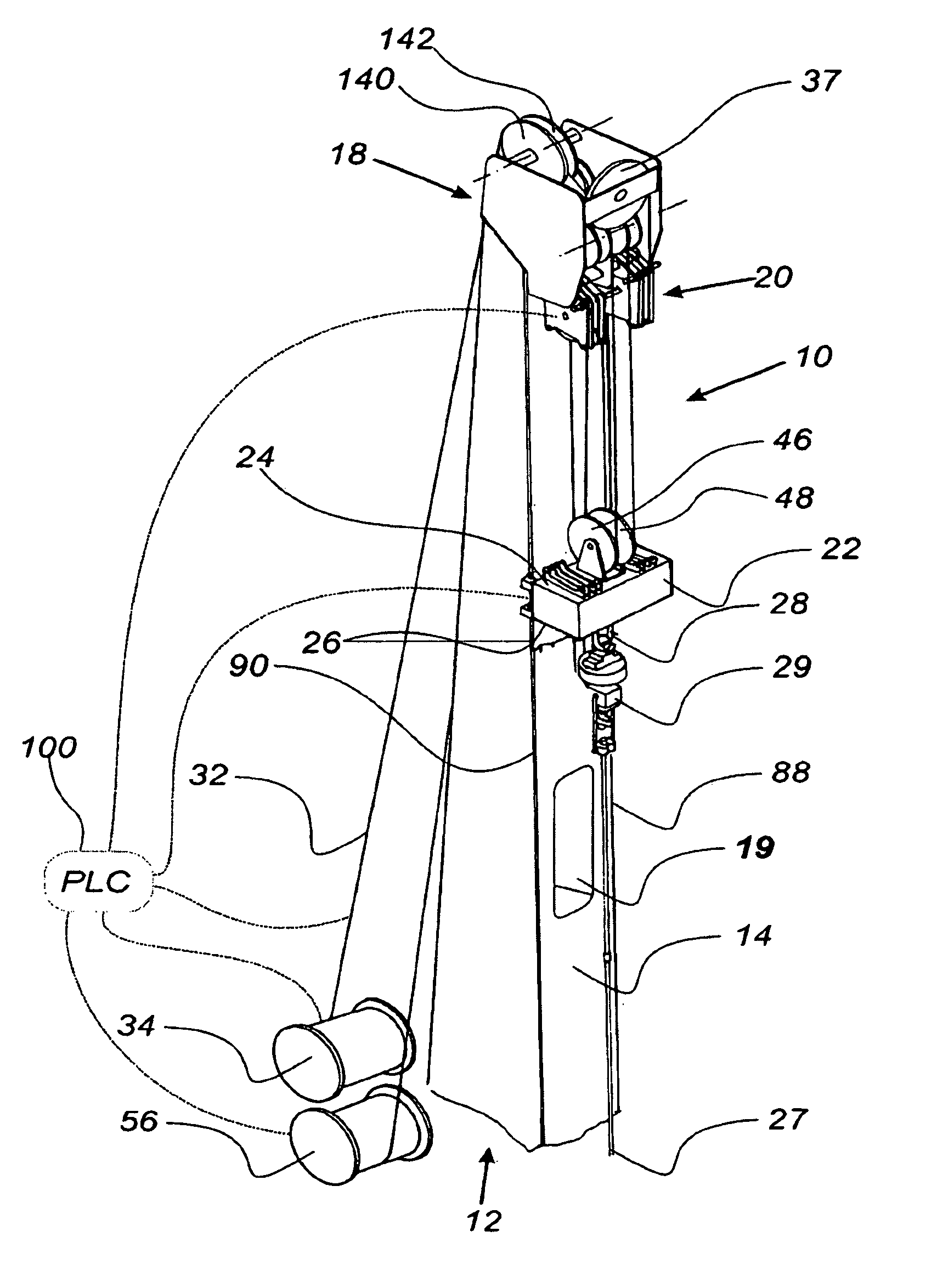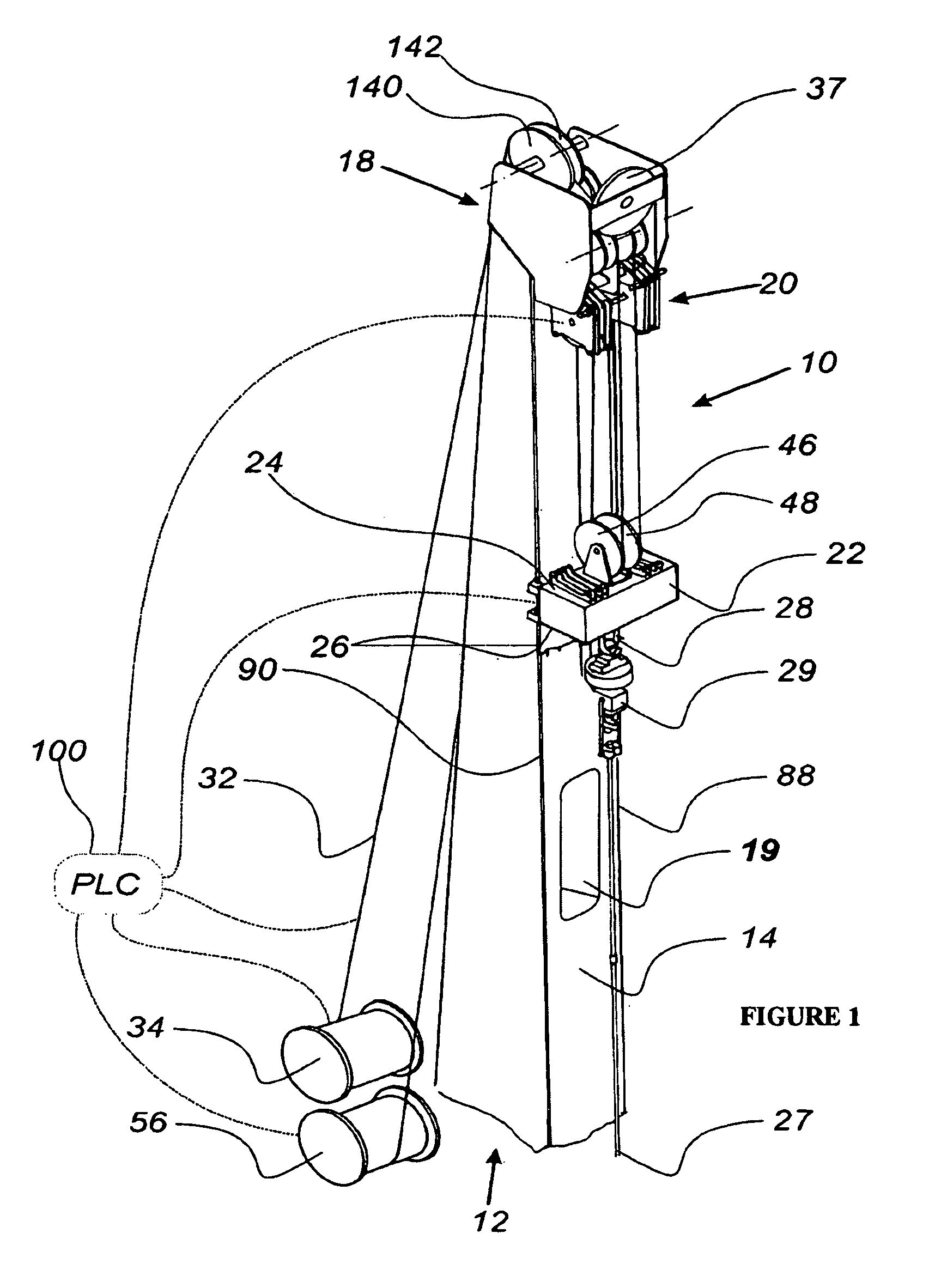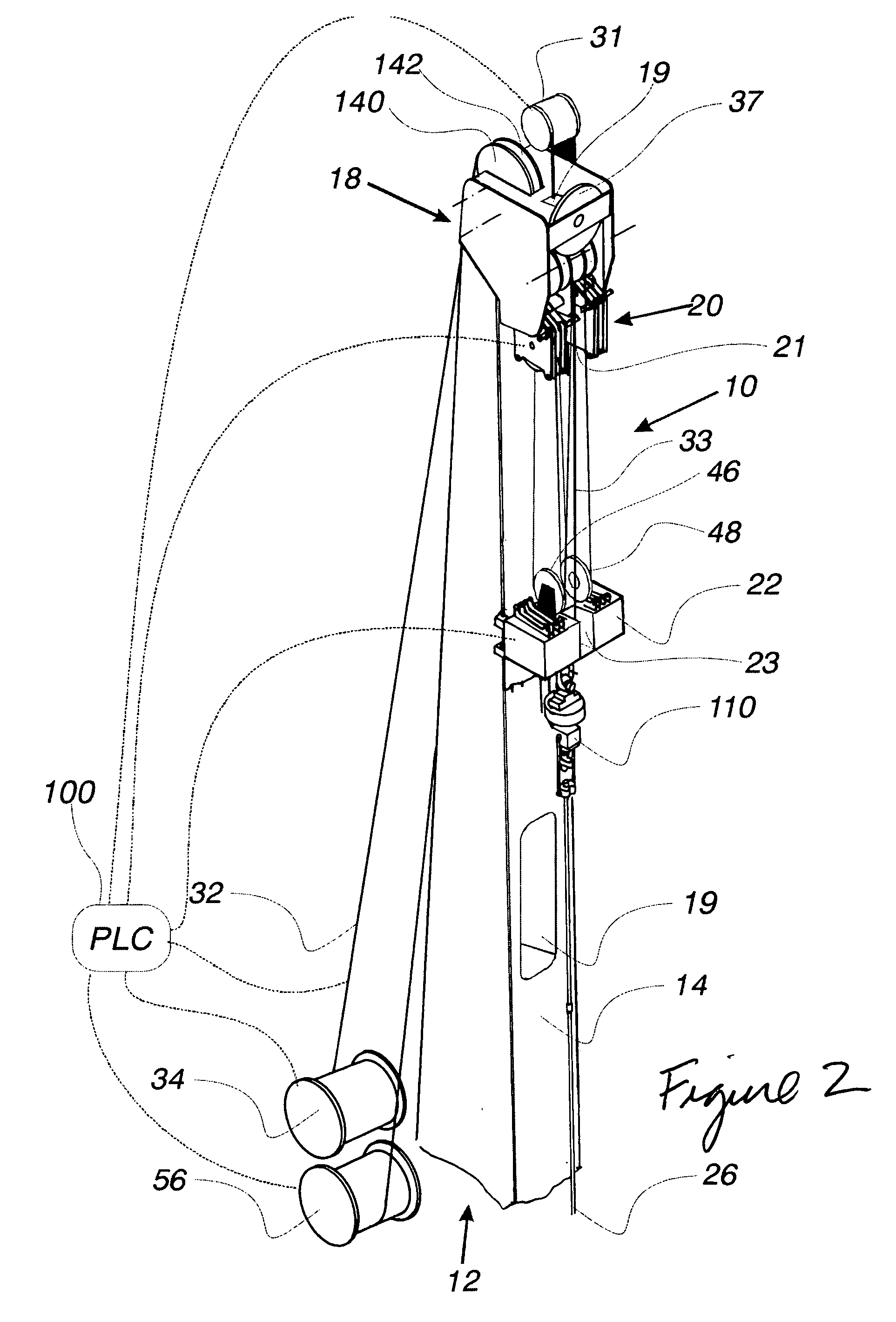Hoist system
a technology of hoist system and running trolley, which is applied in the direction of hoisting equipment, mechanical equipment, drilling pipes, etc., can solve the problems of reducing the useful work that can be done with the running trolley, affecting the safety of the hoist, so as to reduce the chance of personal injury, and the effect of less tim
- Summary
- Abstract
- Description
- Claims
- Application Information
AI Technical Summary
Benefits of technology
Problems solved by technology
Method used
Image
Examples
Embodiment Construction
[0040]Before explaining the present invention in detail, it is to be understood that the invention is not limited to the particular embodiments and that it can be practiced or carried out in various ways.
[0041]A novel feature of the invention is that the hoist system can be used to lift a heavy load and then a light load, in sequence, quickly, safely and efficiently. Similarly, the invention can be used to lift a plurality of light loads and then quickly modified to lift a plurality of heavy loads. The modifications can be done quickly, easily, and safely at sea, without the hoist system needing to be returned to land for retrofitting.
[0042]FIG. 1 shows the hoist system 10 according to the present invention. The hoist system 10 comprises a tubular mast 12. In the description below the term tubular mast will always be used, but it must be understood that any other suitable device, such as, for example, a tower, could also be used. The system is controlled by a control system 100.
[004...
PUM
 Login to View More
Login to View More Abstract
Description
Claims
Application Information
 Login to View More
Login to View More - R&D
- Intellectual Property
- Life Sciences
- Materials
- Tech Scout
- Unparalleled Data Quality
- Higher Quality Content
- 60% Fewer Hallucinations
Browse by: Latest US Patents, China's latest patents, Technical Efficacy Thesaurus, Application Domain, Technology Topic, Popular Technical Reports.
© 2025 PatSnap. All rights reserved.Legal|Privacy policy|Modern Slavery Act Transparency Statement|Sitemap|About US| Contact US: help@patsnap.com



